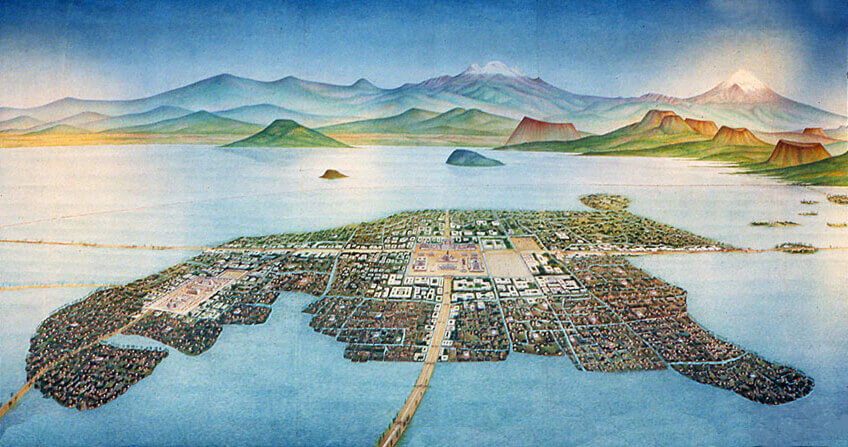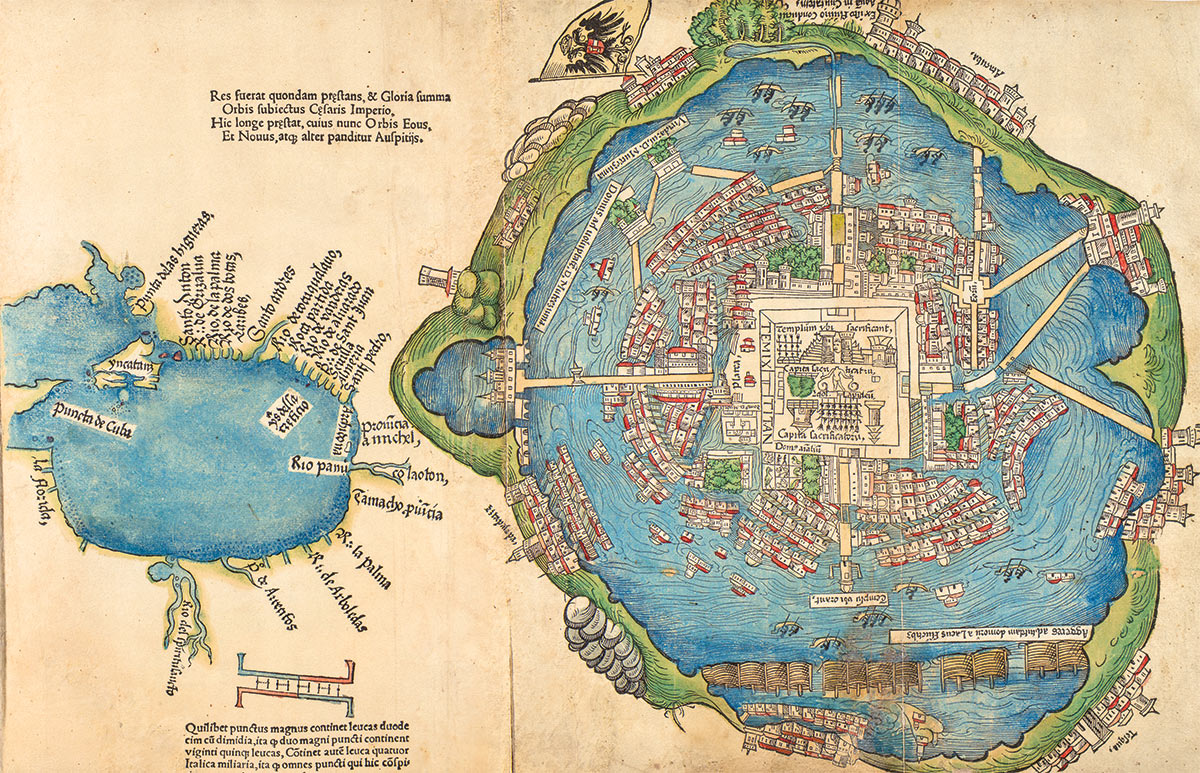Imagine yourself being told by a divine power to cease wondering through the dense jungles, as you have done so for generations, and found a city where an eagle perches on a cactus. You search with your tribe, until you see such an eagle. However, it is located on an island on the middle of a lake. How do you design the city so that it thrives in such a unique environment? Welcome to Tenochtitlan.
Photo retrieved from http://www.mexicolore.co.uk/aztecs/music/poetic-imagery-of-tenochtitlan-in-mexica-songs
Founded in 1325, Tenochtitlan was built on a small island in the lake of what was then Texcoco. While there was a sister city of Tlateloco on the same lake, Tenochtitlan became the more infamous of the two over time.
So many questions arise about how they built this;
How did they keep their water clean?
Really great drainage systems always meant that their waste water was far away from drinking water
How did they travel to the city, and in the city?
Excellent bridges and roads meant the city was always accessible
How did they make sure the city didn’t flood?
By controlling the water ways for miles around, the citizens made sure the water was controlled by a system of dikes and levees
If you are interested more in the details of the city, i highly recommend this video where Invicta goes more into the wonder and majesty of Tenochtitlan.
While researching this, I found that the ruins of Tenochtitlan now under Mexico City. Never realizing that Mexico city was built upon a lake, I quickly rushed over to Google Earth only to find that Lake Texcoco no longer exists. When Spaniards came in 1521 to conquer the Aztec empire, they were so astounded with the marvel of the city that they drew maps (like the one below) and wrote about the beauty of it. But, in typical ‘manifest destiny’ fashion, they didn’t listen to the people who had been living there who know how to manage the water ways, and the lake dried up.
Photo retireved from http://www.mexicolore.co.uk/aztecs/music/poetic-imagery-of-tenochtitlan-in-mexica-songs
I could not think of a better transition into my bog topic for next year. While I have loved diving into architecture this year, I’m finding out more and more of the history that was never taught to me. Look out for a post in the next few days for my year in Muddy History.



